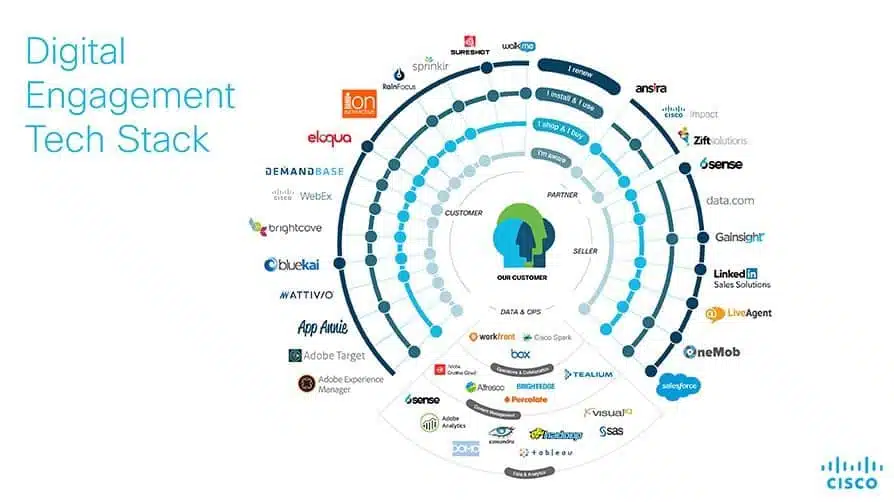A 360-degree view of a customers journey is an aspiration for most businesses. Often data available in different analysis systems present different values, leading to no single point of truth. To integrate technology, data, and insights organizations have started developing a MarTech Stack.
What is a MarTech Stack?
MarTech (Marketing Technology) stack combines different software services and tools to integrate marketing operations like customer acquisition, conversion, retention, team communications and to deliver a single view of customers journey.
Designing Your MarTech Stack
Identifying Core Technologies & Relationships
MarTech Stack starts with technology that you already have in place. Most organizations already have ingredients for a stack however they have not conceptualized these parts as a single entity. To design an effective MarTech Stack, you should map all your technologies and their relationship to one another.
Do you have your core technologies in place? If you don’t have a Content Management System, CRM Solution, and Marketing Automation Platform then don’t plan for a MarTech Stack. Without the core technologies, you will not be able to execute Account-Based Marketing at scale. Your Content Management System, CRM Solution, and Marketing Automation Platform will serve as a central hub for your overall stack.
Configuring a MarTech Stack
Once if you identified your core technologies you’re likely to find gaps where new technologies could play a major role. It’s essential to approach configuring a MarTech Stack as a step-by-step process. As you identify and add new technologies, it’s crucial to evaluate whether the technology meets your needs over time.
But configuring a MarTech Stack is not as easy as it sounds. A good starting point is to look at the MarTech Stack designed by other companies. You can use a Ghostry, a free tool which allows you to identify all the technologies used on any given website. The tool visually displays the technologies used and how they interact with each other. Track Map from Evidon also provides a free visualization of digital technologies used by any website.
CabinetM’s Marketing Stack Configurator is another great tool to visualize your stack before you go out and buy each tool or platform. The tool allows you to customize each layer and analyze different options available.
Another important task to consider before you visualize your MarTech Stack is to identify relevant tag management systems for your website. Tag management system deploys codes across the site which collects and collates data into a single platform. Tags can collect data related to analytics, affiliate marketing, advertising, etc. If you are looking for a holistic tag management system, then do read our guide on Adobe Dynamic Tag Management.
It brings order to marketing chaos.
Travis Wright, Chief Marketing Technologist, CCP Global on Tag Management
Approaches to design marketing stacks
A MarTech Stack can be visualized using three different approaches:
Customer Journey
MarTech Stack can be visualized based on the sales funnel or the customer’s journey starting from the initial contact to closure. This approach keeps the customer at the center of the Marketing Technology Stack. Cisco’s Marteching Stack is entirely modeled around customers.
Flow of Data
This approach studies the movement of data across the organization and visualizes the Marketing Stack around it. Technologies cover any gaps in the data flow while appreciating the dependencies between different components. Informatica visualizes its MarTech Stack, based on its data’s journey across the organization.
Function or Role Oriented
This approach maps the different capabilities required and segregates them into broad categories like lead management, analytics, content, social media, etc. The approach can also break down marketing functions into specialized roles. Solvis Consulting uses a function or role-oriented marketing technology stack.
Topologies of Marketing Technology
As marketing technology evolved, many large software enterprises pursued the strategy of creating closed ‘suite.’ The approach was to create one integrated marketing platform that covers every aspect of a marketing technology stack.
As the marketing technology landscape evolved, new topologies developed. New topologies like multi-platform and bus are more complicated but offer greater flexibility to scale as the scope of the marketing team expands.
When it comes MarTech Stack there is no one size fits all approach. Every marketing technology stack is unique and is tailored to the marketing organizations needs.





